
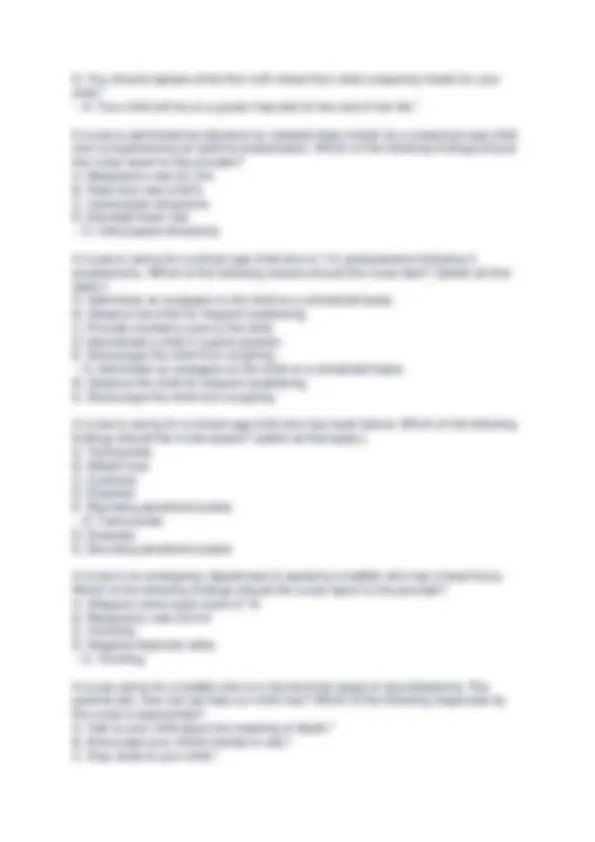
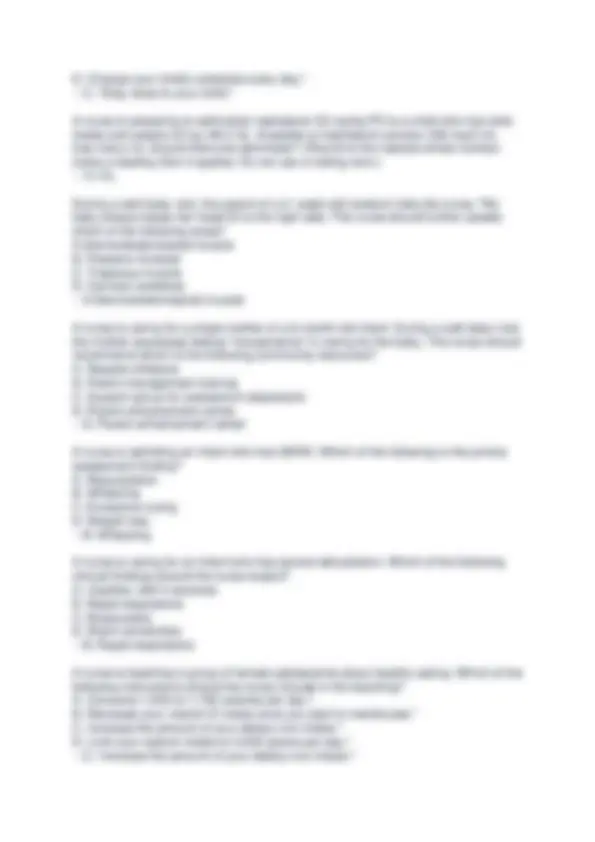
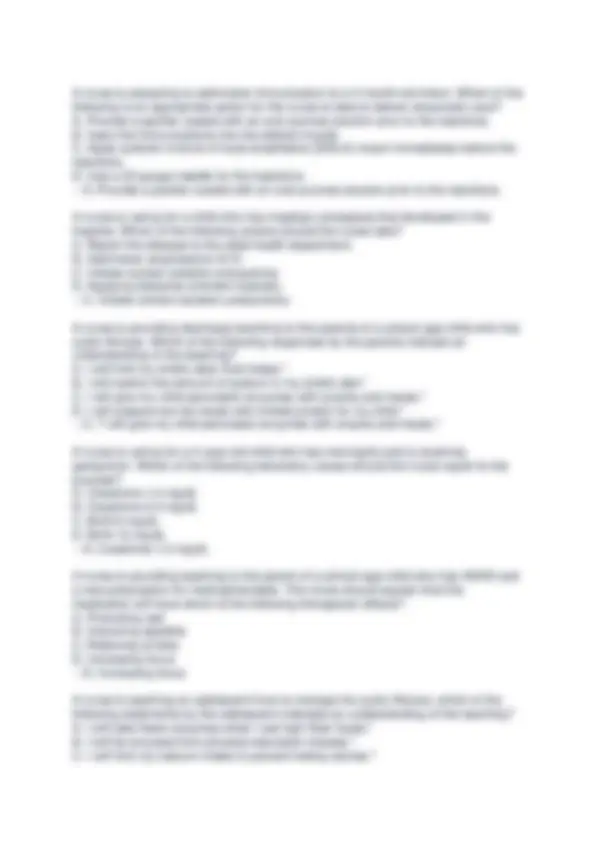
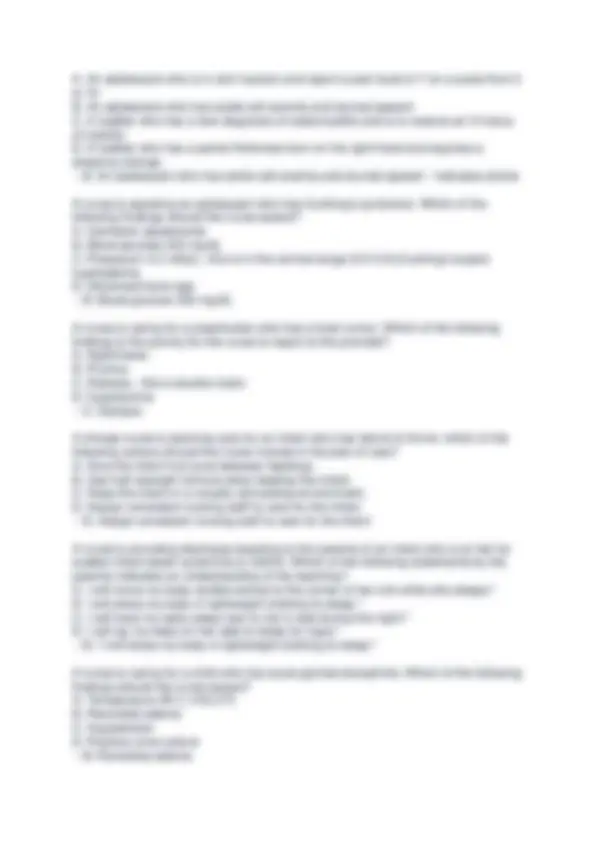
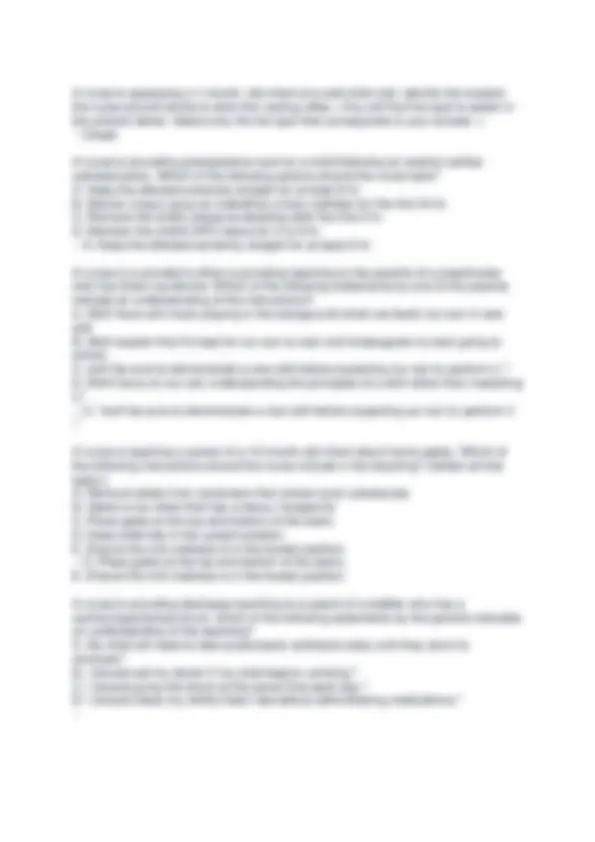
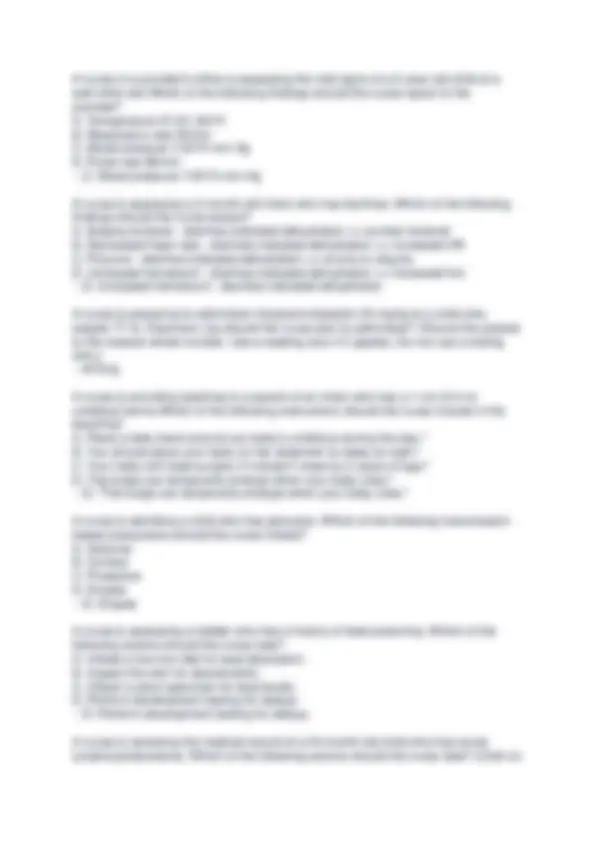
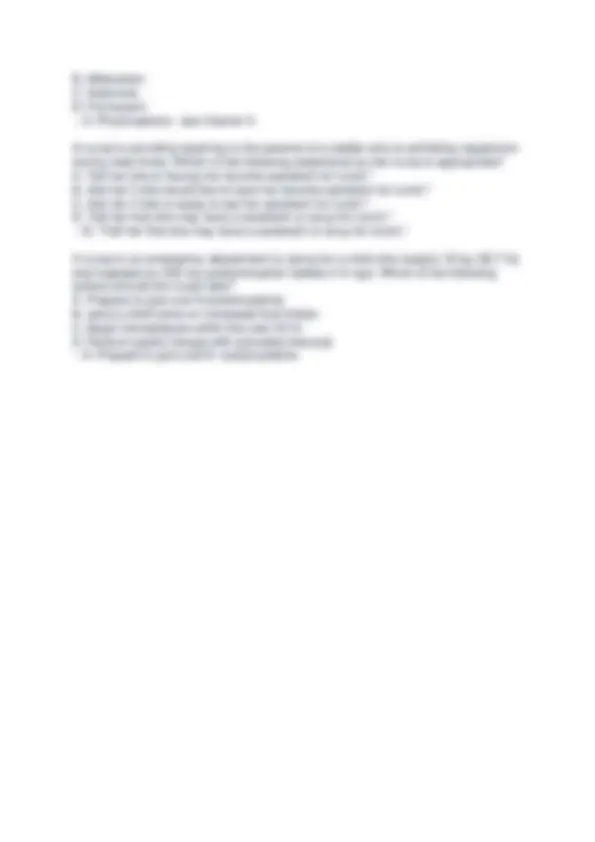


Study with the several resources on Docsity

Earn points by helping other students or get them with a premium plan


Prepare for your exams
Study with the several resources on Docsity

Earn points to download
Earn points by helping other students or get them with a premium plan
Community
Ask the community for help and clear up your study doubts
Discover the best universities in your country according to Docsity users
Free resources
Download our free guides on studying techniques, anxiety management strategies, and thesis advice from Docsity tutors
ATI PEDIATRIC FINAL PROCTORED EXAM LATEST 2024-2025 ACTUAL EXAM COMPLETE 70 QUESTIONS AND CORRECT DETAILED ANSWERS
Typology: Cheat Sheet
1 / 13

This page cannot be seen from the preview
Don't miss anything!








A nurse is providing education about dietary modifications to the parent of a school age child whohas glomerulonephritis. Which of the following information should the nurse include in the teaching? A. Increase the child calcium intake B. Decrease the Child's sodium intake C. Increase the child's intake of carbohydrates D. Decrease the child's fat intake
D. Change your child's schedule every day."
A nurse is preparing to administer immunization to a 3-month-old infant. Which of the following is an appropriate action for the nurse to take to deliver atraumatic care? A. Provide a pacifier coated with an oral sucrose solution prior to the injections. B. Inject the immunizations into the deltoid muscle C. Apply eutectic mixture of local anesthetics (EMLA) cream immediately before the injections. D. Use a 20-gauge needle for the injections.
A. An adolescent who is in skin traction and report a pain level of 7 on a scale from 0 to 10 B. An adolescent who has sickle cell anemia and slurred speech C. A toddler who has a new diagnosis of osteomyelitis and is to receive an IV bolus of nafcillin D. A toddler who has a partial-thickness burn on his right hand and requires a dressing change.
A nurse in a provider's office is assessing the vital signs of a 2-year-old child at a well-child visit.Which of the following findings should the nurse report to the provider? A. Temperature 37.2C (99 F) B. Respiratory rate 26/min C. Blood pressure 118/74 mm Hg D. Pulse rate 98/min
the Exhibit button foradditional information about the client. There are three tabs that contain separate categories of data.) A. Obtain a rectal temperature every 4 hr. B. Apply viscous lidocaine to the oral mucosa - this can paralyze the gag reflex=> asphyxiation C. Place the child in knee-chest position. D. Initiate bleeding precautions.
B. Midazolam C. Naloxone D. Flumazenil